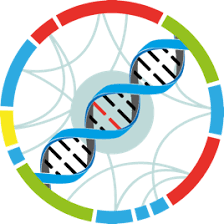Study : Zea mays Epigenomics
Identification
Name
Zea mays Epigenomics
Identifier
dXJuOkVWQS9zdHVkeS9QUkpOQTE4NDcxMA==
Description
We identified a newly formed dicentric chromosome (sDic-15) in maize from intrachromosomal recombination and BFB cycles, in which only one centromere is active. The centromeres lost CentC sequences and dramatic reduced the CRM sequences, but when the molecular features of functional centromeres such as CENH3 was examined, they were present. Immunolocalization analysis of phosphorylation of H3T3, H3ser-10 and H2A levels on this new centromere shows a pattern typical of a functional centromere. Meiotic analysis revealed that this dicentric chromosome is table and transmit very well. To examine the new sequences associated with CENH3 in this centromere, chromatin immunoprecipitation (ChIP) was carried out with anti-CENH3 antibodies and material from young seedlings with or without dicentric chromosome. We mapped the ChIP-Seq reads to the reference genome and found a 723kb region from the short arm of maize chromosome 9 involve the new centromere formation. This region is gene-poor and full of TEs, but genes in this region are transcribed. The original 723kb region shows a high DNA methylation level as native centromeres but had no significant change when it involved into new centromere formation. The reactivation of this newly formed centromere indicated that centromere reactivation may not dependent on the relatively intact DNA sequences or topology of original inactive centromere. Overall design: ChIP-seq was carried out with anti-CENH3 antibodies using material from young seedlings with and without sDic-15 chromosome. For sDic-15, some ChIPed DNA was treated with sodium bisulfite and prepared for Illumina sequencing to test its methylation level.
Genotype
| Accession number | Name | Taxon |
|---|
